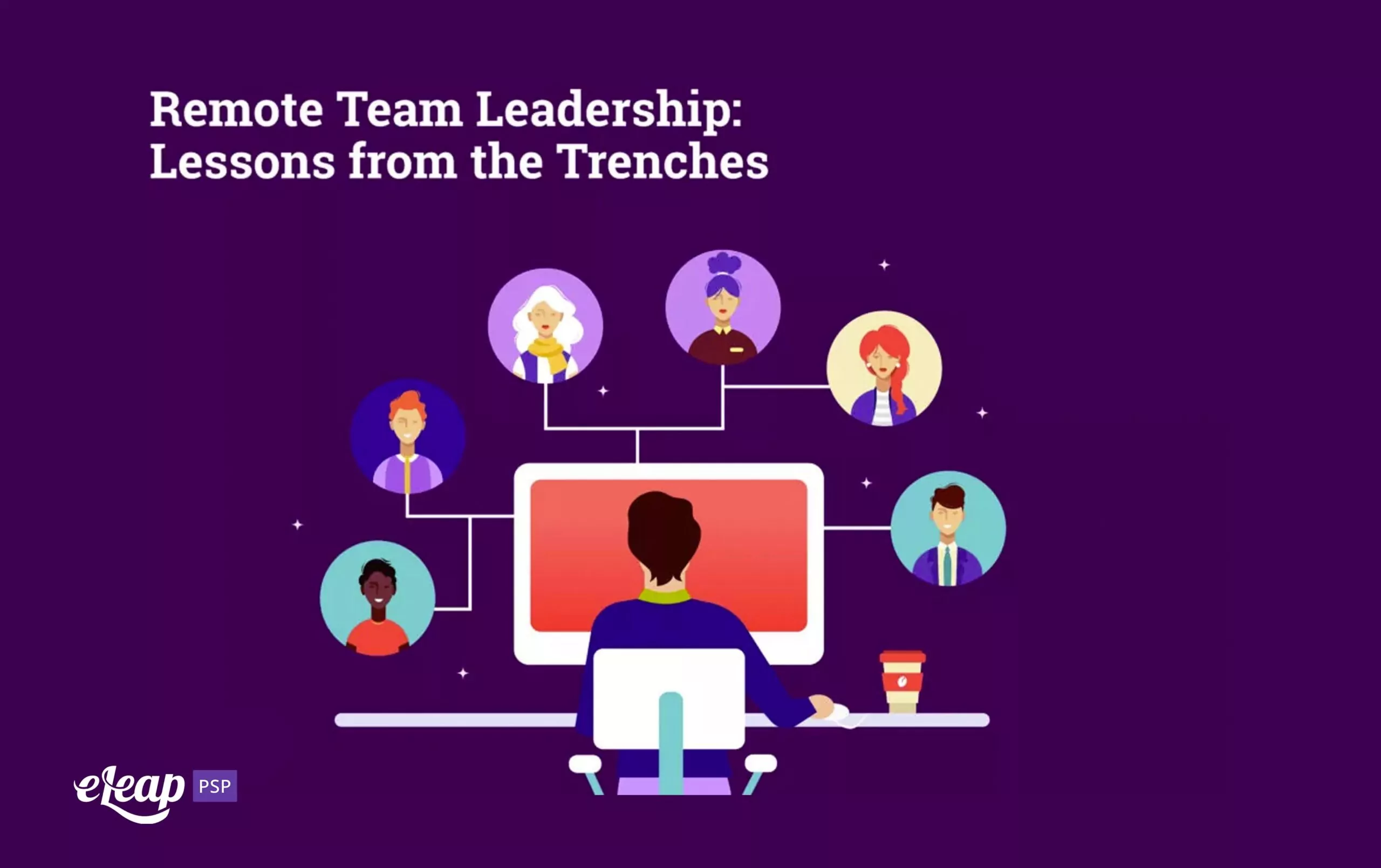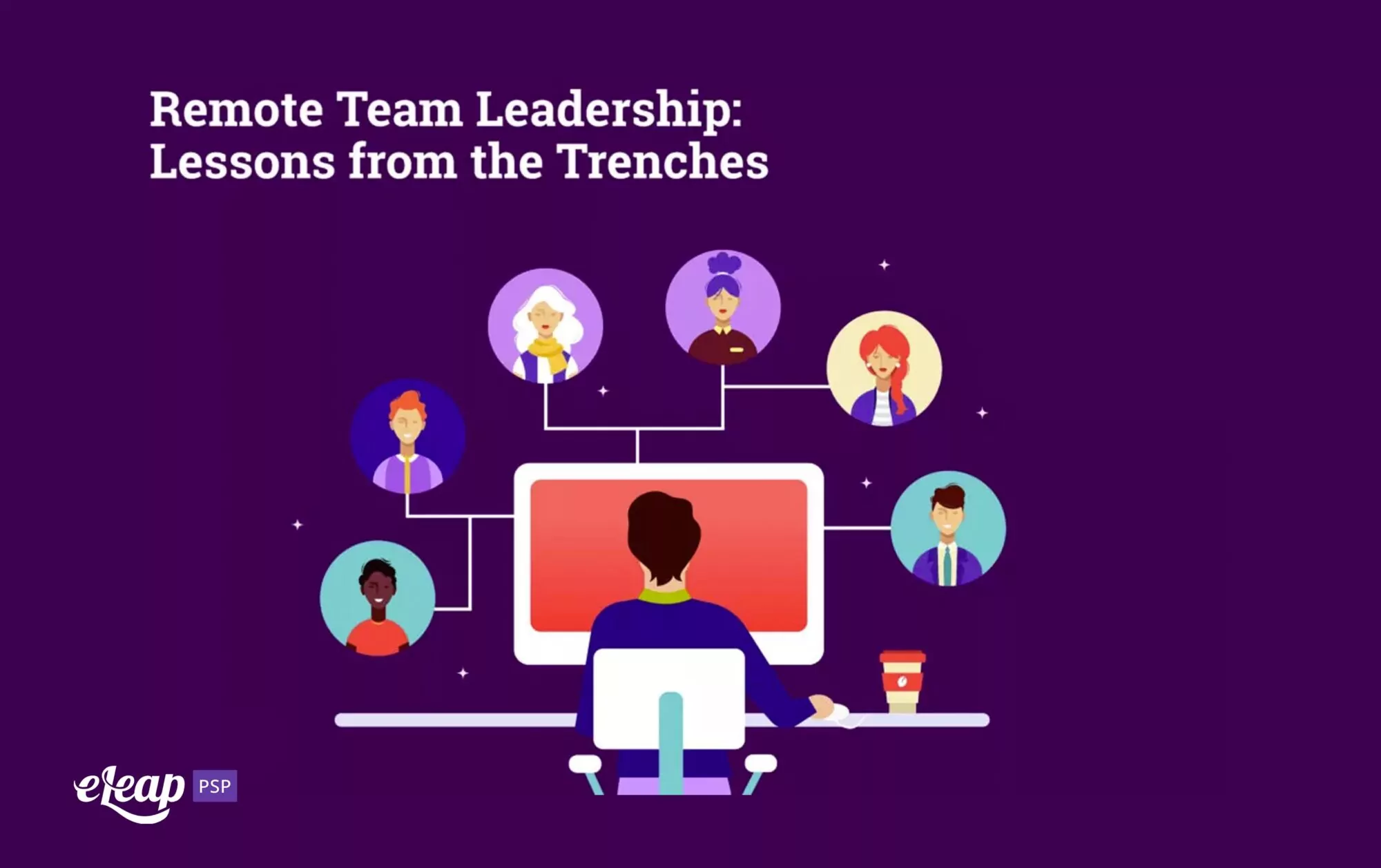Remote Team Leadership: Lessons from the Trenches

Most of us are still working remotely with no sign of things changing anytime soon. COVID-19 continues to wreak havoc and disbursed workforces are becoming the norm. While there is a light at the end of the tunnel, it may be weeks or even months away. Many organizations have had to bolster their remote team leadership.
It has been a very interesting time to say the least. And, while there’s been plenty of upheaval and uncertainty, we’ve also learned some pretty valuable lessons from creating and maintaining remote teams. Whether things ever get back to “normal” or not, these lessons can provide a lot of value moving forward. Below, we’ll explore some of the key things we have discovered.

Remote Team Leadership: Your Business Is More Flexible and Adaptable Than You Think
Think back to a few months ago. Things were normal. It was business as usual. And then COVID-19 stormed the world and everything changed in the blink of an eye. It took about two weeks for your business to completely transition to 100% remote working. If someone had asked you before the pandemic if such a thing were possible, chances are very good you’d have scoffed at the very idea. And yet here we are.
This is proof of something pretty inspiring, pretty important. Your business (and your people) is more flexible and adaptable than you think. In a way, COVID-19 has challenged how we think about businesses. Rather than being some abstract idea that’s embodied in that glass-and-steel construction downtown, your business is now a distributed organism located in residential homes all over the state, possibly the nation, or even the world.
It drives home one fact very, very clearly, as well – your business is your people. Your teams are not just the lifeblood of the company, they’re its flesh and bone, too. Let that lesson inform your decisions related to the business and how you support your people. Remember that without them, there is no business in the first place.
And take a moment to be grateful for the flexibility and adaptability, not just of your business, but of your teams. Think about everything your people have done to make business-as-the-new-usual the norm and keep the company running.
Leadership: Remote Doesn’t Mean Disconnected
There’s a notion that remote workers are inherently disconnected from the rest of the company, but that’s been proven false. With more and more people working remotely, we’re beginning to recognize just how many ways we come together. Not sure that applies to your business?
Consider the following: Before the pandemic, chances are good that you took great pains to ensure no one walked by while you were in a Zoom call (whether you were working remotely or at the office). Today, things are different. When your teenager accidentally shows up in the video, you’re expected to stop what you’re doing and make introductions. The same goes for your spouse/partner, and even your pet. People are finding new ways to connect with one another and show both kindness and open-heartedness.
Chances are good that your teams are also getting together in new and unique ways. No doubt you’ve heard of (or participated in) a virtual happy hour – a chance for co-workers to get together virtually after a long day at work and crack open a cold beer or enjoy a cocktail together. There are dozens of variations on this, many of which can be integrated into a workday, as well.
For instance, consider having your team get together on a Zoom call while going through their emails in the morning. Or, have a group lunch break where everyone can interact with one another over video. Other examples include virtual trivia games and even talent shows. The ways we’re finding to connect and interact with one another are simply amazing, and a testament to just how indomitable the human spirit is.
Leadership: The Advantages of Virtual Meetings
Before remote work became the norm, would you have said that virtual meetings were as effective as in-person meetings? Chances are good that you would have disagreed with that statement. However, experience has shown that they can be just as effective. They can deliver benefits that you can’t get from in-person, face-to-face meetings.
One of the chief advantages here is that virtual meetings offer more potential for collaboration between team members. It works like this: Virtual meetings, such as with Zoom or Microsoft Teams, offer an equal amount of space for everyone. No one’s shunted to the end of the table. Everyone also gets an equal opportunity to speak and interact with the rest of the team, which is a big benefit to team members who might have been too shy to speak up during an in-person meeting.
The big winner here is the organization because virtual meetings encourage more collaboration between team members. With greater collaboration comes an increased ability to compete, improved productivity, and a stronger connection between team members.
Leadership: Managers Matter
There’s been a lot of discussion about team autonomy and whether managers are really necessary for today’s organizations. The pandemic and resulting remote work situation have shown that, yes, managers are needed. They matter. Why?
Simply put, they help hold the team together. It’s not so much about punitive enforcement of performance goals as it is about ensuring that everyone has the support they need to do their best work. Managers become the great connectors, bridging the gap between team members and performance goals, enabling success, and enhancing the company’s culture.
Holding Tight to Lessons Learned
We’ve all learned some pretty important lessons with the pandemic. Many of them have been positive. The four we’ve discussed here are critical to operating a successful company in a world where remote work is the norm, but they can and should transition with your employees back into the workplace if and when remote work is no longer necessary.
Of course, those very lessons could form the foundation for not going back to pre-pandemic norms. After all, if your business is more agile, your teams more productive, and your managers better able to connect and support their people, why go back to the way things were?